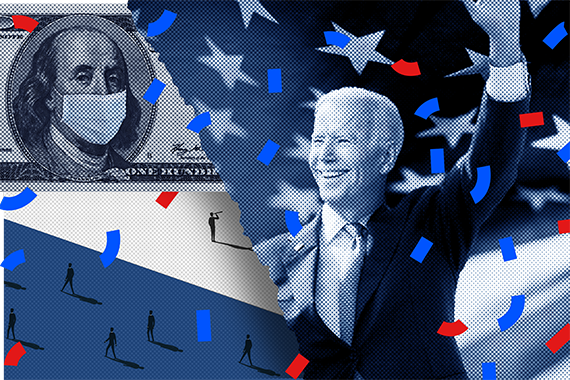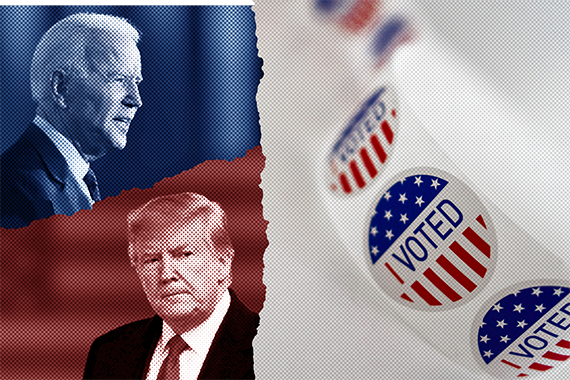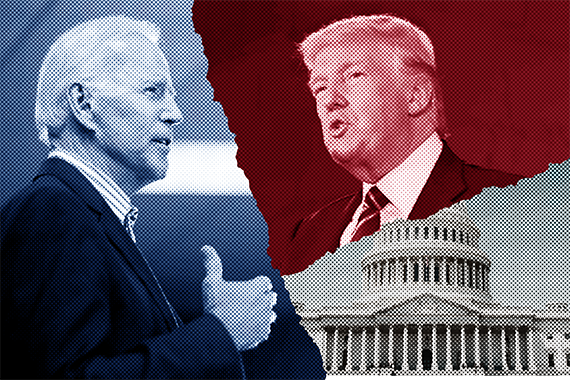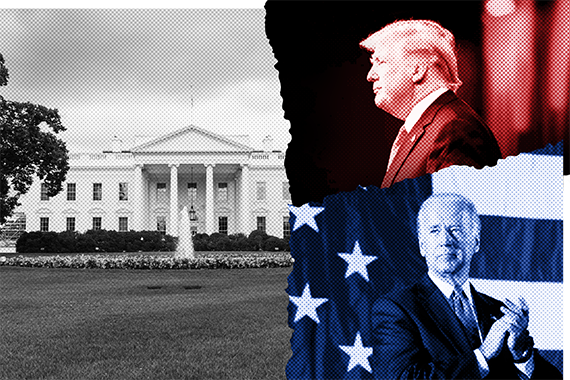Biden’s ‘blue wave’ is a blue ripple
Joe Biden appears to have won the US presidential election, propelled by slim margins in key swing states with a clear urban/rural split in voting patterns.

9th November 2020
Early voting has played a crucial part in Biden’s victory, overturning initial Republican leads in many of the battleground states.
However, the ‘blue wave’ that many expected has turned out to be barely a blue ripple. The Democrats lost seats in the House and have also failed to gain control of the Senate. Mr Biden’s margins of victory were small to say the least, and not remotely a reflection of his apparent lead in the polls in the run-up to the election.
Having nearly lost a second consecutive election to a divisive candidate like President Trump, quite a bit of soul-searching will be required by the Democratic party, including reclaiming the centre. Neither party has managed that feat, with the pattern of voting in the US implying voters are craving just that. Boundary redrawing after the US census means that the Democrats will face a tough task retaining the house in the 2022 midterm elections. The Republicans, however, face the same quandary with the Senate in 2022.
Whichever party reclaims the centre of the American political landscape is likely to be well-placed for gains in 2022, and victory in the 2024 presidential election.
Forget massive fiscal stimulus
Friday’s non-farm payrolls and unemployment data both outperformed, with non-farm payroll adding 638,000 jobs, and unemployment falling nearly one percent to 6.90%. The sampling used for unemployment likely understates the true unemployment level. Meanwhile, the non-farm payroll concealed a large drop in employment by state governments that cannot be explained away by temporary census workers dropping out.
With Covid-19 cases now rampaging across America in ever-dizzying numbers, improvements in US economic data may start to slow or even stop. That is because, with the election finally in the rearview mirror, further restrictions on movement and socialising now seem inevitable across many states. These restrictions will diminish economic activity ahead of the crucial Thanksgiving and Christmas period.
Nevertheless, the fractures between the Republicans and Democrats on economic doctrine are very much in evidence. Over the weekend Republican Senate Majority Leader Mitch McConnell pointed to the improvement in Friday’s data as a reason to limit any fiscal stimulus to a low number. A Democrat President and House majority, combined with a Republican Senate majority, may lead to a stalemate on many of Biden’s crucial policy efforts. The fiscal stimulus is likely to be the first victim of the new government, which will essentially be a continuation of the status quo with new cast members.
With Biden bound for the White House, how will you trade?
Already have a live trading account? It is easy to fund your account using one of the following payment methods






Back to the Fed
With the fiscal stimulus likely to be off the table, carrying the load of the US economy will fall on the shoulders of the Federal Reserve once again. December’s FOMC meeting is now “live” with new monetary policy initiatives almost certain. Negative interest rates are unlikely to be among them, but bond yields, after having spiked ahead of the election on blue wave expectations, have now reversed and started tracking lower again. Negative bond yields at the short end of the curve cannot be discounted as we head into 2021.
The miraculous arrival of Covid-19 vaccines that could be manufactured in huge volumes quickly, and then distributed widely, could still change that equation before the end of the year. If 2020 has taught us anything, however, it’s that assumptions are perilous, and plans - if there are any - only last as long as the first engagement.
Financial markets have rallied today in the warm afterglow of Biden’s apparent victory. While the US remains divided, the sighs of relief can be heard from the rest of the world, with no polling required. The value of the US Dollar has fallen, notably against pro-cyclical Asian and commodity currencies. Equities are climbing higher, a trend that started last week even before the votes were counted. Commodities are rallying.
It is clear that a huge amount of capital - likely stored as US dollar, Japanese yen and Swiss franc cash - had been waiting on the sidelines until the US elections passed. Markets needed no second-guessing for the floodgates to open and the global recovery trade to return to its pre-election self.
With the Federal Reserve and the European Central Bank both set to ease more in December, the debasement of the US Dollar could well continue into the new year and perhaps much of 2021. In that environment, as investors search for yield in a zero percent interest rate world, equity and commodity asset price inflation may well continue to flourish.
Trump is still President until January 20
Trump remains US President until Mr Biden is inaugurated, if Biden will be finally confirmed as the election winner. In the meantime, President Trump is perfectly entitled to challenge state and county election results that his campaign deems are unfair, incorrect or fraudulent.
Making accusations, proving accusations and winning in court are all substantial hurdles for Trump’s legal team to overcome though. In the meantime, the typical “lame duck” handover period between administrations may be anything but. There is plenty from the past four years to suggest that Trump may not go quietly, and this could unsettle markets.
Similarly, there will be no instant magic panacea in international relations thanks to a Biden win. Trump is still President, Biden is not. So pursuing a bullish investment strategy predicated on an immediate improvement in US/China relations would be dangerous. Biden himself has said he will continue to be tough on China; how tough is not at all clear right now.
OPEC+ were also muted in their response, saying they would miss their “good friend” Donald Trump. There will be some nervousness in the grouping now if Biden indicates a willingness to engage with Iran and perhaps ease sanctions. Iranian oil hitting international markets is just what OPEC+ and US shale don’t need right now.
On a more positive note, the Biden administration would almost certainly engage diplomatically with Europe in a more civilised way. The US would also likely re-engage in trade treaties that cover Asian/Pacific nations excluding China. That would boost world trade and aid the world's economic recovery, including in the United States.
Jeffrey Halley
Senior Market Analyst, Asia Pacific, OANDA
Jeffrey has three decades of financial market experience. Before joining OANDA, Jeffrey was Director of Trading at Saxo Capital Markets in Singapore. At OANDA, he provides approachable macro analysis of various asset classes with a typically Kiwi viewpoint aimed at demystifying the financial markets for the many, and not the few. Jeffrey holds an MBA from the Cass Business School, and is a regular guest with Bloomberg, BBC, Reuters and Channel NewsAsia.
Exclusive to Oanda

US election impact and market analysis
Market experts examine the impact of Biden’s contentious US election victory and its effect on the financial markets in this ongoing video series.

Record turnout could delay winner announcement
While pre-election voting has favoured Joe Biden, the Trump campaign is hoping that a big turnout on Election Day will power him to a second surprise victory.

Last debate didn't move needle for Trump
Both candidates gave improved performances at the last Presidential debate, notably President Trump, who delivered a much improved and polite performance.

Early numbers bode well for Democrats
The US presidential election is already here. According to the US Elections Project, 28.7 million Americans have voted in over 40 states, with 55% of the absentee ballots coming from Democrats and 24% from Republicans.